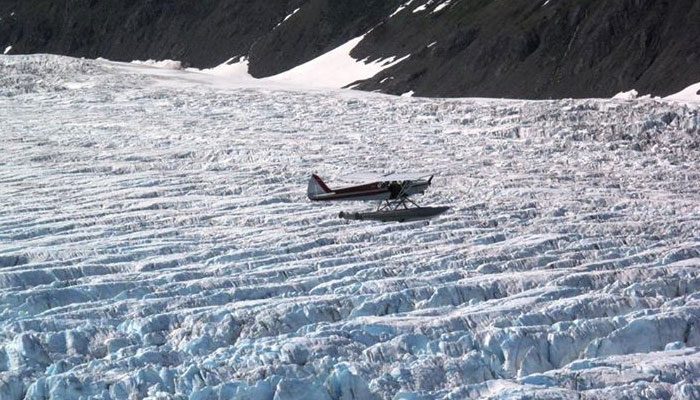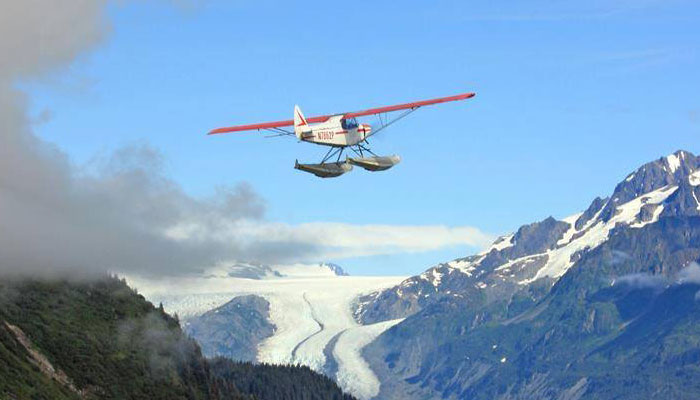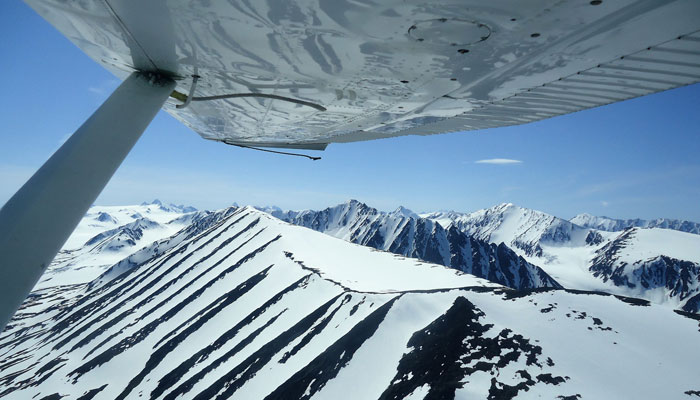Adding a Seaplane Ratings
By David Wimer
Backcountrypilot.org
My Experience
I am a low time (250 hrs.) private pilot. When I completed my private in 1997 I planned on taking the usual route of adding additional ratings/privileges. Instrument-Commercial-Multi, were all things I viewed as being on the horizon. I got started, as was many hours into my training. Then life struck. Change in employment, Change in marital status, a long distance move. These were all things that forced my flying onto the back-burner.
When the stars realigned and I had the time, opportunity, (and of course money) to get back “into” flying, several years had passed. A couple of false starts, and finally back to flying with something close to regularity happened in the fall of 2003.
I still wanted to complete my instrument and commercial instruction, but I wasn’t ready to dive back into that quite yet. Being a big history buff, as well as a fan of anything nautical, I started looking at the seaplane rating as something “fun” to do, while exposing me to a different side of aviation, and hopefully “sharpening” my skills as a pilot.
I began to research, and initially started looking at those locations closest to me here in the Los Angeles area. This meant most likely Lake Havasu/Colorado River, or a couple of locations farther north in California. I made the decision that if I was going to learn to fly floats; I wanted to do it where float flying was a way of life, “the real deal” so to speak. That meant either Washington State, or Alaska. I must admit I also had the “Walter Mitty” syndrome, and wanted to see what being a “Bush Pilot” was about. I chose Alaska.

Research led me to Moose Pass Alaska, and “Alaska Float Ratings”, which is part of the Scenic Mountain Air operation. Their website, as well as the ad I had cut out of the Pacific Flyer newspaper promised “real bush flying,” “taught by real working bush pilots.”
I put down my deposit and anxiously waited all summer. I had booked the Labor Day Holiday week. I had chosen a package that included 10 hours of flight time, covering 4-5 days of training.
So, there I was on Labor Day, at 0900 ready to go. The drive in from Anchorage was beautiful, and I spotted several super cubs ready to go down at the docks.
Vern Kingsford, the owner, (and more importantly the DPE) started the training off by introducing us (class of four for the week) to the instructors. All are working pilots in Vern’s 135 operation. We would rotate instructors based upon availability and to give each student a different perspective. After some ground instruction, it was time to go fly.
The first flight was an overview, and introduction. It also was used as a familiarization with the Super Cub on floats. Slow Flight, steep turns, stalls, and basic handling were all gone over. At the end of the hour, we descended to follow the river back to Trail Lake. This was used to get the feel of the aircraft. I knew this was going to be different than anything I had ever done before. All my experience has been in Cessna’s and Piper Warriors. I quickly learned what rudder pedals are actually used for, and what my feet should be doing! With a river below us, trees looking uncomfortably close (for this L.A. area pilot!) and mountain wall’s towering up nearby it was definite excitement!
My meager abilities of writing do not do the scenery justice. After landing we debriefed, and I prepared for my next lesson by studying up some of the handouts. This was the way each of the days went. On each of the following day’s leading up to the check ride I flew at least twice a day, which left time for study, as well as sightseeing in the area.
This course really gets you “back to basics.” My previous training was conducted at a small college in Arizona. It was great training, and they have a good program. But, just like many schools it is a “pipeline” style of school, teaching what it takes to fly in the ATC system, and preparing most of its students for “Airline” style jobs. Flying “by the numbers,” so to speak. I thought I had learned to fly in the mountains.Boy was I wrong. Flying comfortably over some mountains, or around them (Southern Arizona) is sure not flying IN THEM! Let alone landing on a tiny lake with gusty winds amongst them.
I then thought about the FBOs I had been renting from over the past two years, and the checkout’s and training I had been given. Many times procedures that are drilled into your mind are more for the FBOs benefit than your flying safety and skill in my opinion.
How many times during a checkout were you cautioned against “jockeying the throttle” or to be “smooth and gentle” with the throttle. Flying floats teaches you to “use what you have.” I don’t mean abuse the aircraft, but not be “tentative” with the controls, especially the engine.
After the first couple hours, and several firsts for me; such as, first float experience, first stick aircraft experience, first tandem seat experience, first bush flying experience; I concluded that my past training although “quality” had more or less just taught me to “operate an aircraft” instead of learning to truly “fly a plane.”
Learning to read the water, the winds, even the leaves on the trees was an eye-opening experience for me. No ATC influence or attempt to make your decision for you. It’s all on you.
Vern joked that you get a mountain flying course embedded into your float course for no extra charge. He was right about that. The location there at Moose Pass was perfect for this. My check ride proved this to me.


When it came time for my check ride on Friday, conditions were dead calm at the Trail Lake base. To get the proper conditions we had to fly to a couple of nearby lakes. Just a couple miles away conditions were ok, but gusts of nearly 30 were kicking around. I had my work cut out for me. While commuting to the lakes that Vern was going to use for that portion of my check-ride, he showed me some additional mountain flying techniques. As an LA area pilot, being told to go “closer to the mountain” for better conditions really made my eyes go wide.
This is what I signed up for. Not just the scenery, or the thought of “really flying in Alaska” (which was great), but trying to absorb some of the experience of people who do this for a living and in Vern’s case have many thousands of hours of experience.
To sum it all up, it was the best flying experience I have ever had. It has really lit a fire to improve my “basic” skills that sometimes seem to go to the wayside. I plan on adding a tail wheel endorsement as soon as possible. Oh, and even though Vern made me work for it, I did pass my check ride!
I recommend Alaska Float Ratings highly. I know there are many quality instructors out there, but in my mind they are top’s there in Moose Pass.
